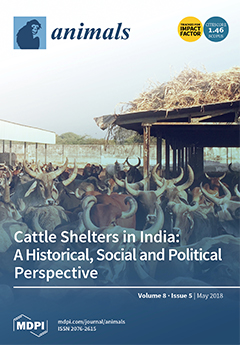Open AccessArticle
Single Nucleotide Polymorphisms in the HIRA Gene Affect Litter Size in Small Tail Han Sheep
by
Mei Zhou, Zhangyuan Pan, Xiaohan Cao, Xiaofei Guo, Xiaoyun He, Qing Sun, Ran Di, Wenping Hu, Xiangyu Wang, Xiaosheng Zhang, Jinlong Zhang, Chunyuan Zhang, Qiuyue Liu and Mingxing Chu
Cited by 23 | Viewed by 5319
Abstract
Maintenance of appropriate levels of fecundity is critical for efficient sheep production. Opportunities to increase sheep litter size include identifying single gene mutations with major effects on ovulation rate and litter size. Whole-genome sequencing (WGS) data of 89 Chinese domestic sheep from nine
[...] Read more.
Maintenance of appropriate levels of fecundity is critical for efficient sheep production. Opportunities to increase sheep litter size include identifying single gene mutations with major effects on ovulation rate and litter size. Whole-genome sequencing (WGS) data of 89 Chinese domestic sheep from nine different geographical locations and ten Australian sheep were analyzed to detect new polymorphisms affecting litter size. Comparative genomic analysis of sheep with contrasting litter size detected a novel set of candidate genes. Two SNPs, g.71874104G>A and g.71833755T>C, were genotyped in 760 Small Tail Han sheep and analyzed for association with litter size. The two SNPs were significantly associated with litter size, being in strong linkage disequilibrium in the region 71.80–71.87 Mb. This haplotype block contains one gene that may affect litter size, Histone Cell Cycle Regulator (
HIRA).
HIRA mRNA levels in sheep with different lambing ability were significantly higher in ovaries of Small Tail Han sheep (high fecundity) than in Sunite sheep (low fecundity). Moreover, the expression levels of
HIRA in eight tissues of uniparous Small Tail Han sheep were significantly higher than in multiparous Small Tail Han sheep (
p < 0.05).
HIRA SNPs significantly affect litter size in sheep and are useful as genetic markers for litter size.
Full article
►▼
Show Figures






